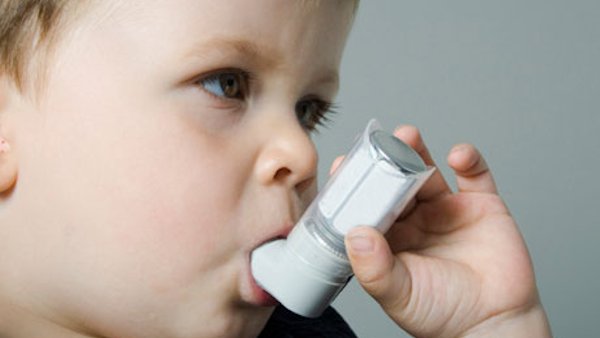
For the first time, researchers from the Mailman School of Public Health at Columbia University in New York, NY, have uncovered a link between prenatal exposure to two phthalates — a group of chemicals commonly found in household products — and an increased risk of childhood asthma. The findings were recently published in the journal Environmental Health Perspectives.
“Everyone from parents to policymakers is concerned by the steep rise in the number of children who develop asthma. Our goal is to try and uncover causes of this epidemic so we can better protect young children from this debilitating condition,” says study co-author Dr. Robin Whyatt. “Our study presents evidence that these two phthalates are among a range of known risk factors for asthma.”
Asthma is one of the most common long-term diseases in childhood, affecting an estimated 6.8 million children in the US, and leading to more than 14 million primary care visits and nearly 2 million visits to the emergency room each year.
While the causes of childhood asthma are not yet fully understood, it is thought that children develop the condition due to a combination of factors including inherited traits, certain types of airway infections at a very young age, and exposure to environmental factors.
According to the research team, led by senior author Dr. Rachel Miller, past studies have suggested that childhood exposure to phthalates — a group of chemicals commonly used in plastics, cosmetics and other products — can increase asthma risk.
They note, however, that there is increasing evidence that prenatal exposure to certain chemicals can affect children’s lung development and respiratory health, but researchers have yet to look at how prenatal exposure to phthalates influences children’s risk of asthma. In this latest study, the team wanted to find out.
Prenatal exposure to phthalates ‘increased asthma risk by more than 70 percent’
The team analyzed data from 300 women and their children who were a part of the Columbia Center for Children’s Environmental Health study. The women were enrolled in the study between 1998 and 2006 while they were pregnant.
Their level of exposure to four phthalates was measured through chemical metabolites in urine samples taken during the third trimester of pregnancy, and their child’s phthalate levels were measured through urine samples taken at age 3, 5 and 7 years.
The researchers then compared asthma risk among children born to mothers who had high phthalate concentrations during pregnancy with those born to mothers who had low phthalate concentrations.
Almost 30 percent (94) of the children were clinically diagnosed with asthma between the ages of 5 and 11 years, while another 60 children had asthma-like symptoms or a history of wheeze, but were not diagnosed with asthma.
The team found that children born to mothers exposed to high levels of butylbenzyl phthalate (BBzP) during pregnancy were 72 percent more likely to develop asthma, while children born to mothers exposed to high levels of di-n-butyl phthalate (DnBP) had a 78 percent higher risk of the condition, compared with children of mothers who had low exposure to both chemicals.
The researchers say they also found an association between prenatal exposure to DnBP and asthma-like symptoms, but no increased risk of asthma or symptoms were linked to prenatal exposure to di-2-ethylhexyl phthalate (DEHP) and diethyl phthalate (DEP).
‘If we want to protect children, we have to protect pregnant women’
Phthalates are used in an array of products we are exposed to every day, including perfumes, insect repellents, plastic food containers, cosmetics, shower curtains, and even steering wheels and dashboards — producing the “new car” smell many of us are familiar with.
Phthalates have been found in indoor air and dust and in human urine and blood samples from children, adolescents and adults. National data collected by the Centers for Disease Control and Prevention show that levels are highest in children ages 6 to 11 and in women, and that blacks have higher levels of phthalates than do whites.
In the US, six phthalates – including BBzP and DnBP – have been banned from being used in children’s toys and other children’s products since 2009.
But given the widespread use of phthalates in other products, Dr. Miller says it remains very difficult to avoid exposure to them and notes there have been no attempts to alert pregnant women to the risks of such exposure:
“The fetus is extremely vulnerable during pregnancy,” she says. “While it is incumbent on mothers to do everything they can to protect their child, they are virtually helpless when it comes to phthalates like BBzP and DnBP that are unavoidable. If we want to protect children, we have to protect pregnant women.”
In 2012, the research team used the same cohort to reveal that children exposed to DEP or BBzP had a higher risk of airway inflammation, while prenatal exposure to BBzP was associated with an increased risk of childhood eczema.
And another study from the team, published in The Journal of Allergy and Clinical Immunology, found that children exposed to the chemical bisphenol A (BPA) are at higher risk of asthma.
